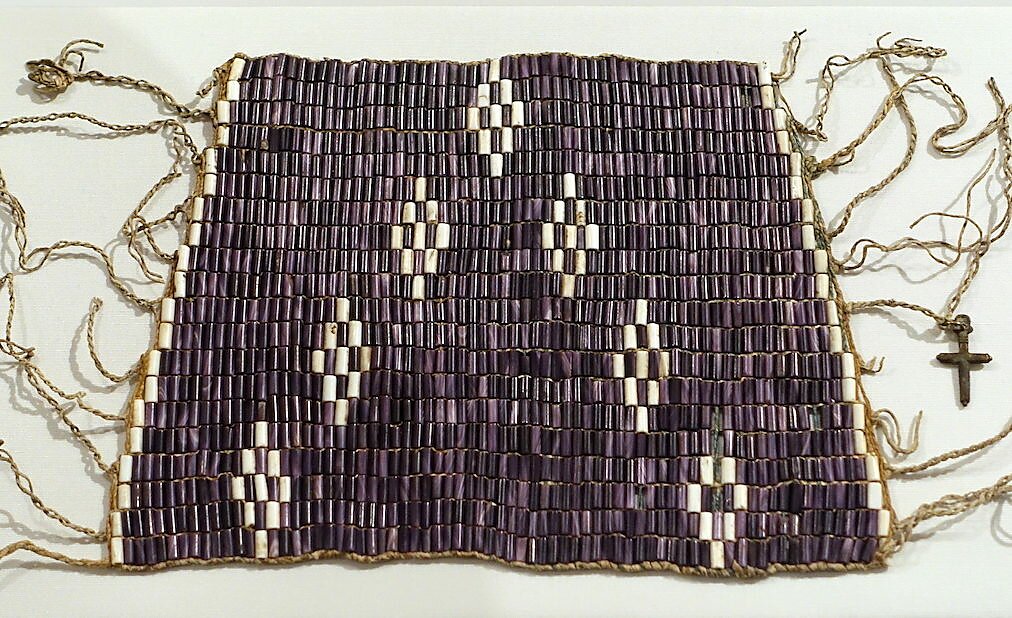Happy Thanksgiving to all of my fellow free bankers out there!
Today is our biggest secular national holiday. Not everyone celebrates Christmas or Easter much less other national holidays like Memorial Day or Labor Day, but I don’t know anyone who doesn’t like Thanksgiving. So, as we sit around eating turkey or some other dinner of thanks, remember also that we acknowledge the beginning of native currency competition in America. While there was always competing use of different national currencies (basically different denominations and weights of gold and silver) in what would become the American colonies — and in that sense America was founded on free banking principles — Thanksgiving gives us a time to remember the birth of a truly American free banking experience.
Wampum!
Yes, wampum was, arguably, the first native American free banking episode. Here is the description of the birth of the first native American currency, wampum, from the 1883 Ancient Landmarks of Plymouth by William T. Davis, a former president of the Pilgrim Society (pp. 57–9):
No legal-tender scheme, in these later days, has been bolder in its conception, or more successful in its career than that of the Pilgrim Fathers, which, with the shells of the shore, relieved their community from debt, and established on a permanent basis the wealth and prosperity of New England. Many of the Indian tribes not acquainted with the use of wampum, were instructed in its use and before the enterprise could be successfully carried out, and adopted it greedily when it was fully understood. This currency of the early days was made from purple and white parts of the quaw-haug shell, round, about a sixteenth of an inch in thickness, and a quarter of an inch in diameter, with a hole in the middle for stringing on strings of bark or hemp, the purple and white alternating on the string, the purple of double the value of the white, and the whole value at five shillings per fathom. (p.58–59)
[caption id=”” align=“aligncenter” width=“375”] Quahog and whelk wampum made by Elizabeth James Perry (Aquinnah Wampanoag/Eastern Band Cherokee), c. 2009 [/caption]
Unfortunately, the success was relatively short-lived. Here is a follow up to that development in the Rhode Island colony by Oliver Payson Fuller, The History of Warwick Rhode Island: Settlement in 1642 to the Present Time published in 1875 (pp. 59 and 70) explaining,
The currency of the colony, wampum paege [sic], which had been in use from the earlier settlement, had fallen so low in value that it was declared to be no longer legal tender. The other colonies had abandoned it some time previously. Massachusetts had commenced the coining of silver ten years before. …
As there was no restriction in relation to the manufacture of peage, a large amount came early into circulation, and as early as 1649, a law was passed lowering the standard of black peage one third, and four instead of three per penny was made the legal rate. (p. 59)
There were even differences between new Coke currency and classic English currency even of the same name, explains Fuller, “Forty shillings of the New England currency was equivalent to thirty shillings of English currency.” (p. 70)
I guess this shows that inflation is as American as apple pie — though some things are definitely sweeter than inflation.
Disclaimer
This post was originally published at Alt‑M.org. The views and opinions expressed here are those of the author(s) and do not necessarily reflect the official policy or position of the Cato Institute. Any views or opinions are not intended to malign, defame, or insult any group, club, organization, company, or individual.
All content provided on this blog is for informational purposes only. The Cato Institute makes no representations as to the accuracy or completeness of any information on this site or found by following any link on this site. Cato Institute, as a publisher of this article, shall not be liable for any misrepresentations, errors or omissions in this content nor for the unavailability of this information. By reading this article and/or using the content, you agree that Cato Institute shall not be liable for any losses, injuries, or damages from the display or use of this content.


